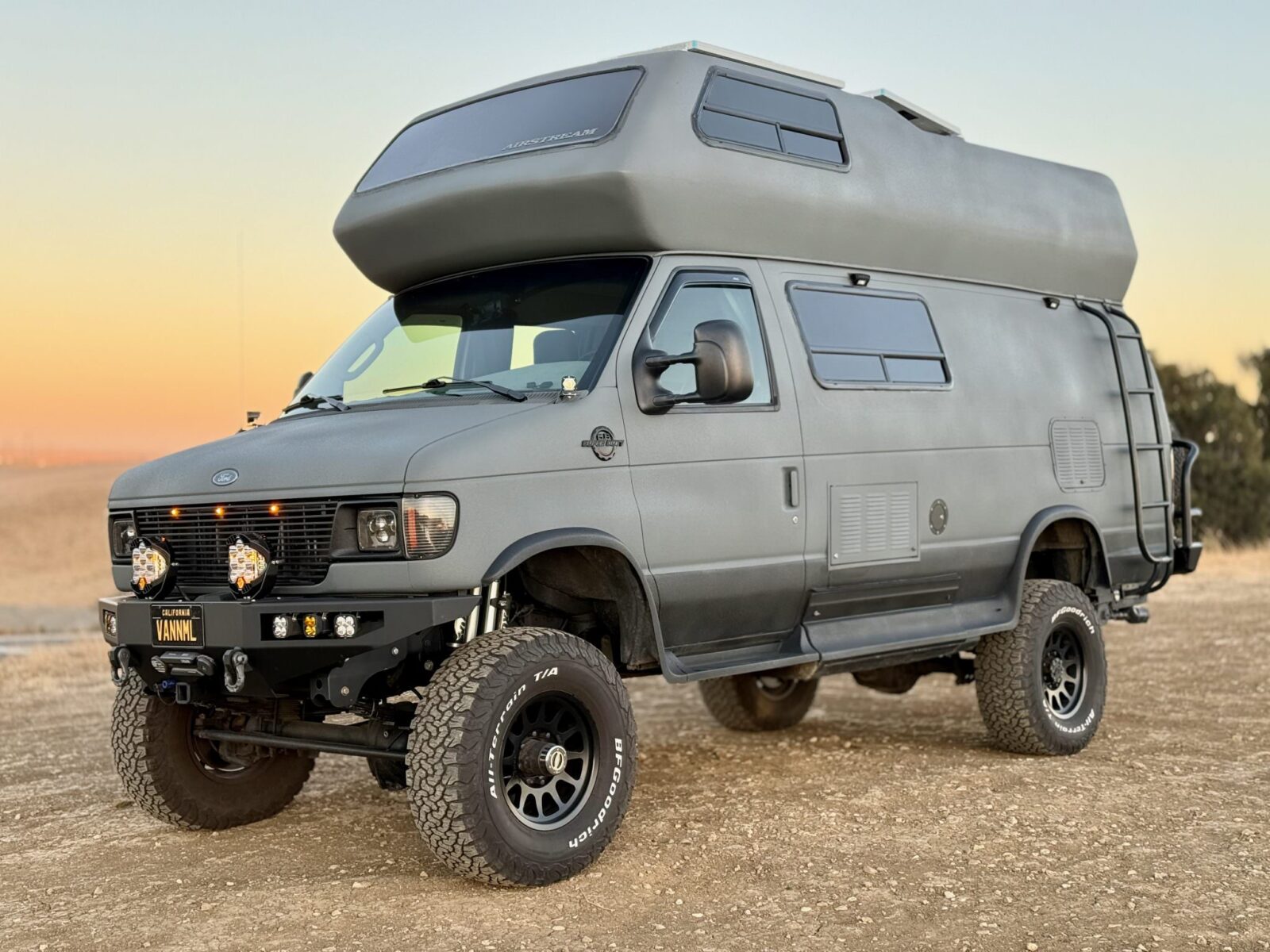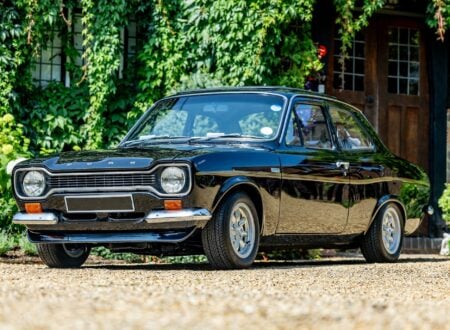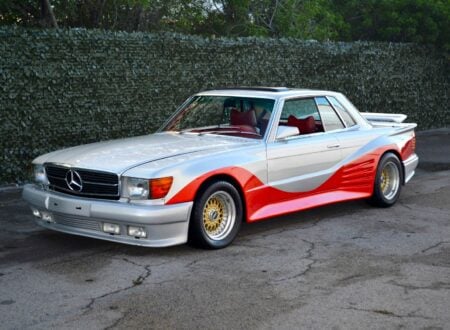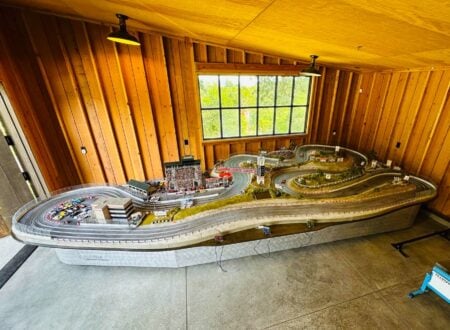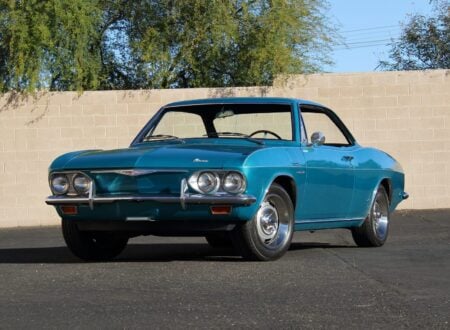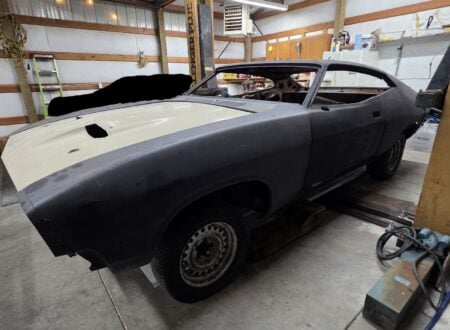This is a Ford E-350 that was given an Airstream 190 camper conversion when new. It was then later converted to 4×4, with a 6 inch lift, a Dana 60 front axle, locking differentials, Fox remote-reservoir shocks, and a Warn winch.
It’s now a camper that’s highly capable off-road, making it ideal for those who want to go on adventures well off the beaten track and then set up a civilized camp when they arrive.
Fast Facts – The Ford E-350 Airstream 190 Camper 4×4
- This is a 1998 Ford E-350 Airstream B-190 camper van, converted to 4×4 in 2021, features a 6-inch lift, Dana 60 front axle, locking differentials, Fox shocks, and BFGoodrich All-Terrain tires, making it highly-capable for off-road adventures while retaining its original camper functionality.
- The Airstream B-190, introduced in 1988, was Airstream’s first small Class B motorhome, offering features like a double bed, kitchenette, bathroom, and onboard water and power systems. Its compact size and versatility made it a popular alternative to larger motorhomes until production ended in 1999.
- This van includes modern upgrades such as woodgrain flooring, LED lighting, overhead storage, a Rockford Fosgate audio system, and a fully equipped kitchenette with a water filter, refrigerator, and three-burner stove. It also has a bathroom, air conditioning, and heating for comfortable living in all seasons.
- It’s powered by a 6.8 liter Triton V10 engine producing 275 bhp and 410 lb ft of torque, paired with a 4-speed automatic transmission and dual-range transfer case. Currently located in Tracy, California, it’s offered for sale with a clean California title on Bring a Trailer.
The Origins Of The Airstream B-190 Van
The Airstream B-190 Van made its first appearance in 1988, it would be Airstream’s first small Class B motorhome and it would be based on the venerable Ford E-350 van. This model would prove to be a major success for the company, they would sell almost 1,400 of them between 1988 and 1999. The model would be succeeded by new Airstream vans like the Interstate, Avenue, Parkway, Autobahn, and Atlas.
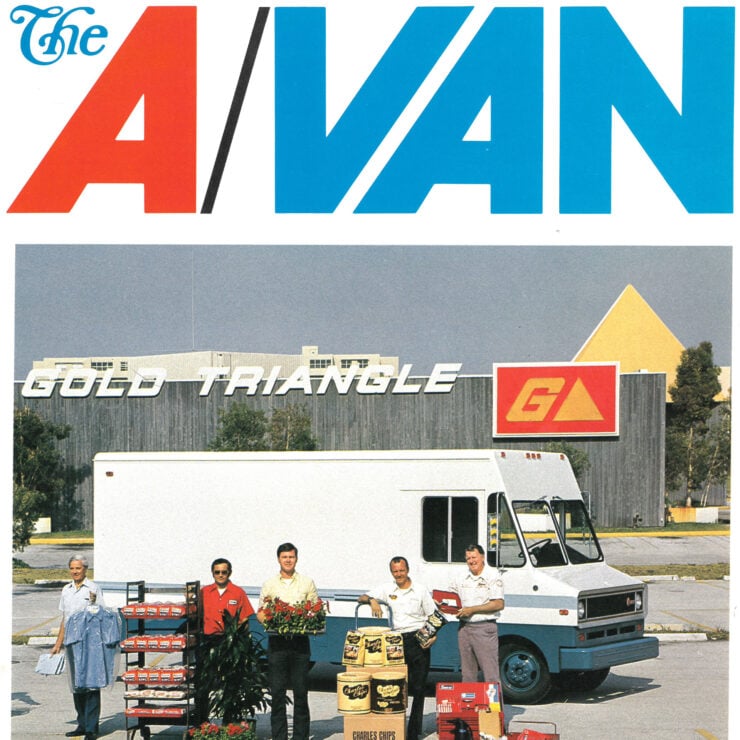

Before the Airstream B-190 Van there was the Airstream A/van, and unusually for the company that made its name selling travel trailers and motorhomes, the A/van was developed for commercial and industrial use.
The A/van was developed after the 1973 Oil Crisis which saw demand for large motorhomes and travel trailers drop off a proverbial cliff. Airstream responded to this by pivoting a section of their production to the construction of a slab-sided, high-roof van that they called the A/van – short for “Airstream Van.”
The A/van would be used extensively by Quality Bakers of America, Frito-Lay, and Snap-On Tools among many others, and its riveted aluminum body could be assembled on the main line alongside the more traditional Airstream designs.
The Incredible Airstream B-190 Van
The B-190 Van was technically the successor to the A/van however it wasn’t for commercial purposes, it was developed as a motorhome. The name B-190 Van was chosen as it came after the A/van, because it was designed to be a Class B motorhome, and was 19 feet long.
Each Airstream B-190 Van started out as a Ford E-350 cargo van, with power initially provided by the 351 cubic inch V8, or the optional 460 cubic inch V8. Airstream fitted a fiberglass roof section which improved headroom and provided an elevated double bed over the cab.
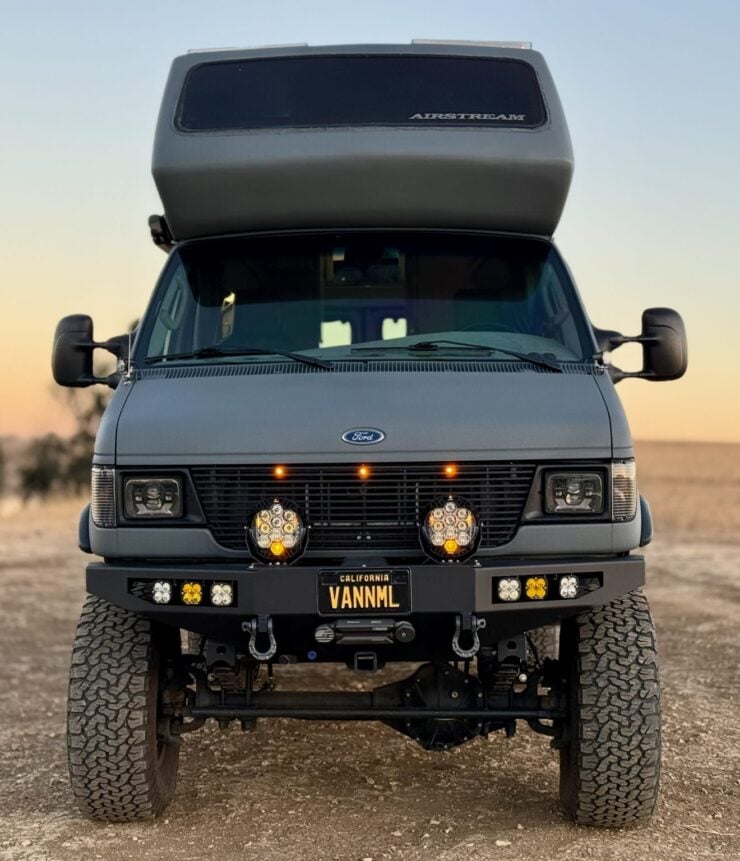

The interior was fitted out in the style of Airstream trailers of the time, with a toilet, shower, kitchen/galley, and a couch that could be converted into a bed. The B Van had its own onboard battery system providing house power, and it could be plugged into mains power when you arrived at camp.
The B-190 also had onboard water storage as well as gray and black water tanks, as well as a removable gas cylinder for powering the gas burner stove top. Inside you would find an oven and that stove top, a refrigerator, a range hood, plenty of countertop space and cupboard space.
For many the Airstream B-190 Van provided the perfect motorhome as it was much smaller than Airstream’s other offerings, and thus it was easier to drive and park. It also required far less fuel, and it had all the essential modern conveniences that a couple or a small family needed.
A small percentage of these B-190s would be later converted to 4×4 thanks to specialist companies who perform the conversion using parts largely sourced from Ford’s F-series pickup trucks. The conversion process is relatively straightforward, with the addition of a front axle, dual-range transfer case, new front and rear driveshafts, and a suspension lift to give more ground clearance.
With the off-road conversion completed, the Airstream B-190 Van becomes a genuinely capable vehicle once the asphalt turns to dirt, providing many of life’s modern conveniences far away from the nearest town or city.
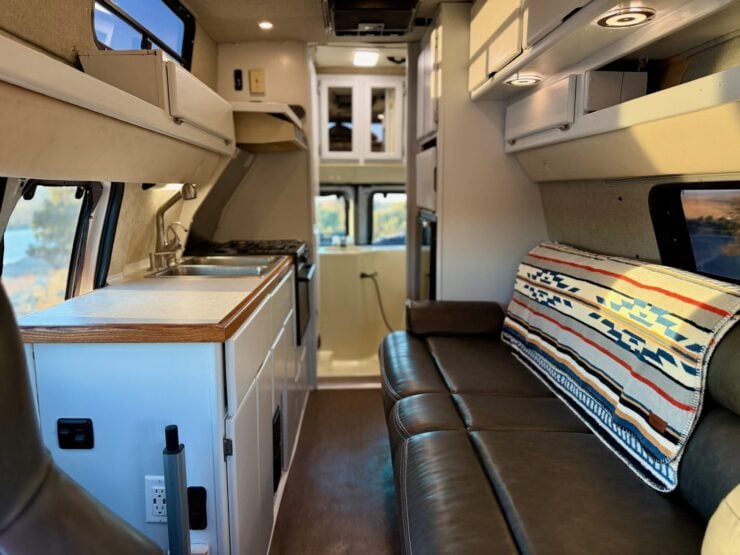

The Ford E-350 Airstream B-190 4×4 Shown Here
The camper you see here is an Airstream B-190 that was built on a brand new Ford E-350 in 1998. It was then given a full 4×4 conversion in 2021 by OCD Fabrication of Pleasant Grove, California, using parts sourced from U-Joint Offroad of Fletcher, North Carolina.
The van now rides on new suspension that’s 6 inches higher than stock, with Fox remote-reservoir shocks and front leaf springs along with rear airbags. It has front and rear disc brakes, a Dana 60 front axle, a full-floating rear axle with a locking differential, and custom driveshafts.
It’s also been fitted with Method 17″ alloy wheels fitted with 35×12.5″ BFGoodrich All-Terrain KO2 tires, aftermarket bumpers front and back, a trailer brake controller, auxiliary LED lighting, and a Warn winch up front to help get you out of trouble when required.
Inside the van you’ll find woodgrain flooring, LED lights, overhead storage cabinets, USB ports, privacy shades, and a Rockford Fosgate audio system with a subwoofer. The lounge has a fold-out sofa, and the cab-over compartment houses a full double bed, and it has sliding windows for ventilation.
The kitchenette, or galley if you prefer, comes equipped with a sink with running water, a Guzzle water filter, an Atwood three-burner stove, a 12-volt Vitrifrigo refrigerator/freezer, and an rangehood. The van has a bathroom with a toilet, shower, and sink, and it comes equipped with both an air conditioning unit and a heater.
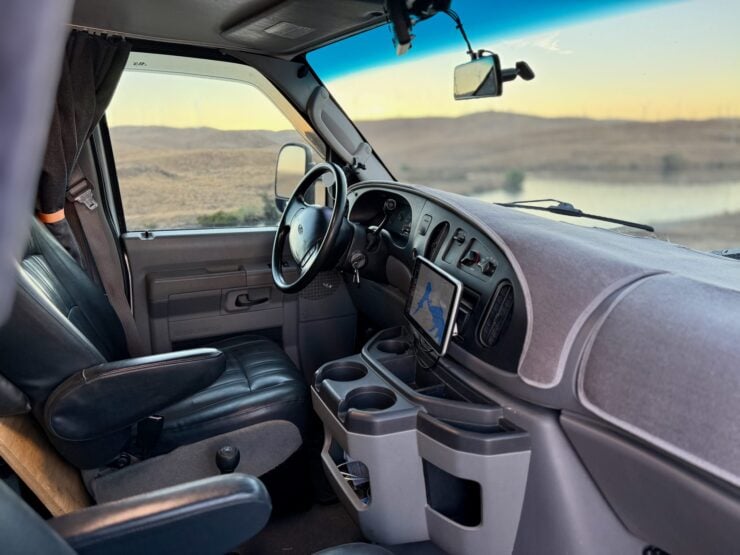

Power is provided by a 6.8 liter gasoline Triton V10 which is mated to a 4-speed automatic transmission and a dual-range transfer case. In the original 1998 Ford E-350 this V10 was producing 275 bhp and 410 lb ft of torque, meaning it will have absolutely no issues keeping up with modern highway traffic.
It’s now being offered for sale out of Tracy, California on Bring a Trailer with a scissor-style jack and a clean California title in the seller’s name. If you’d like to read more about it or register to bid you can visit the listing here.
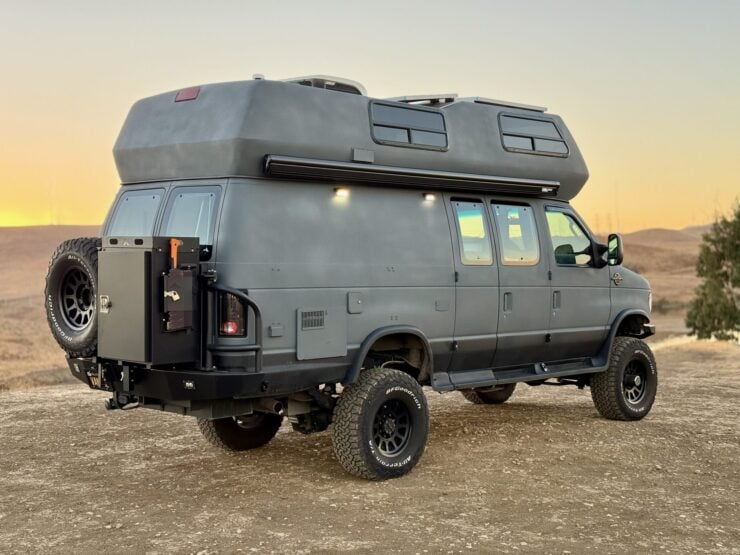
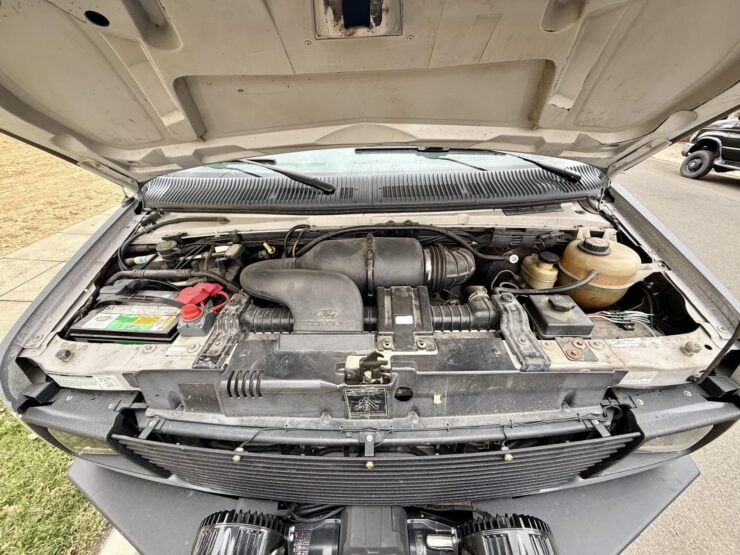
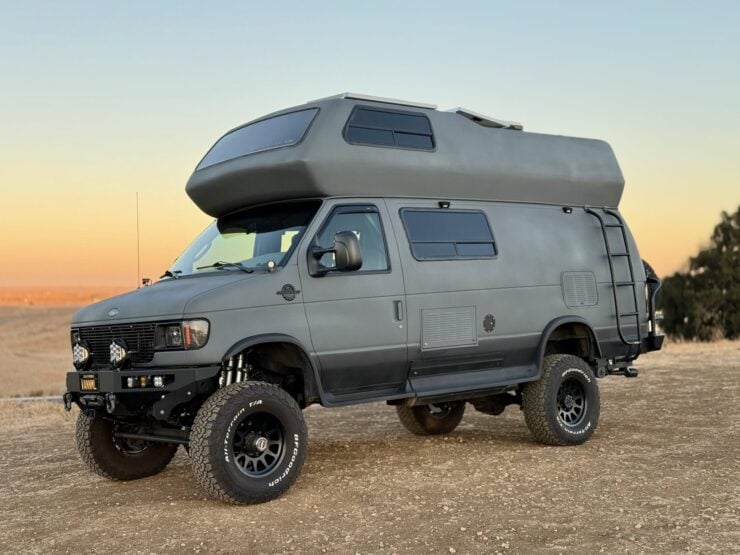
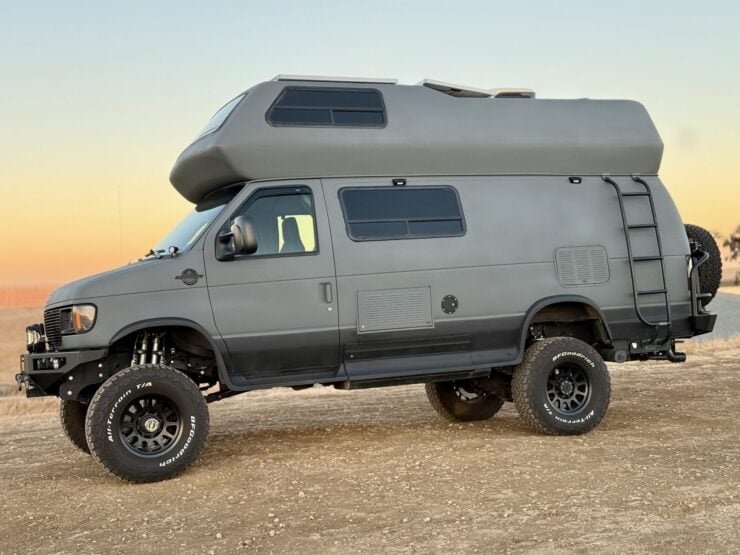
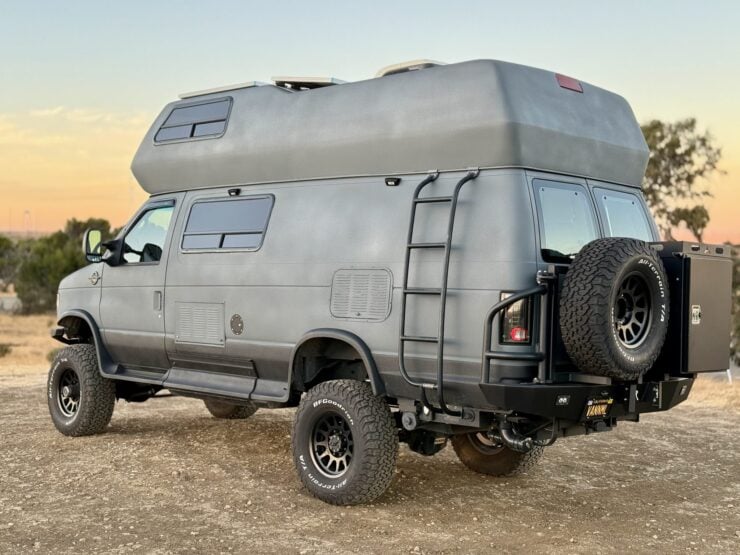
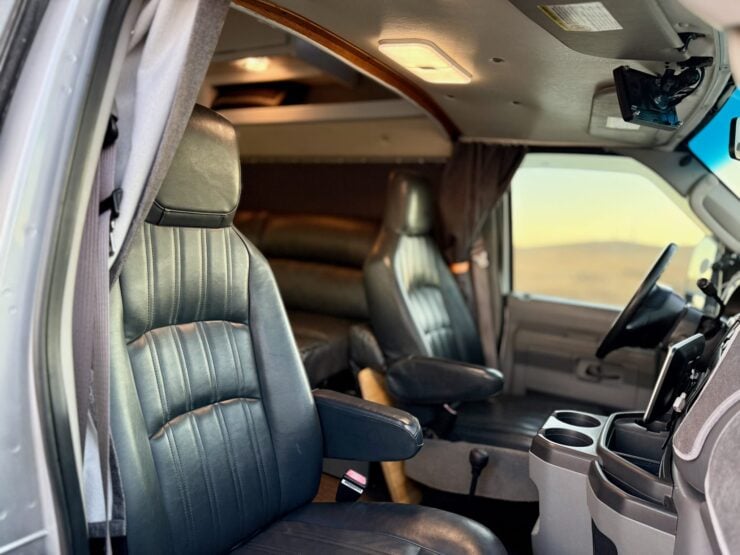
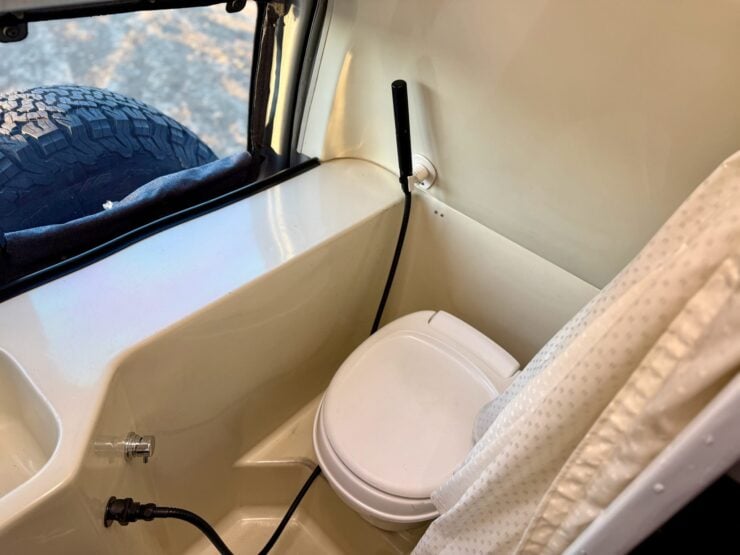
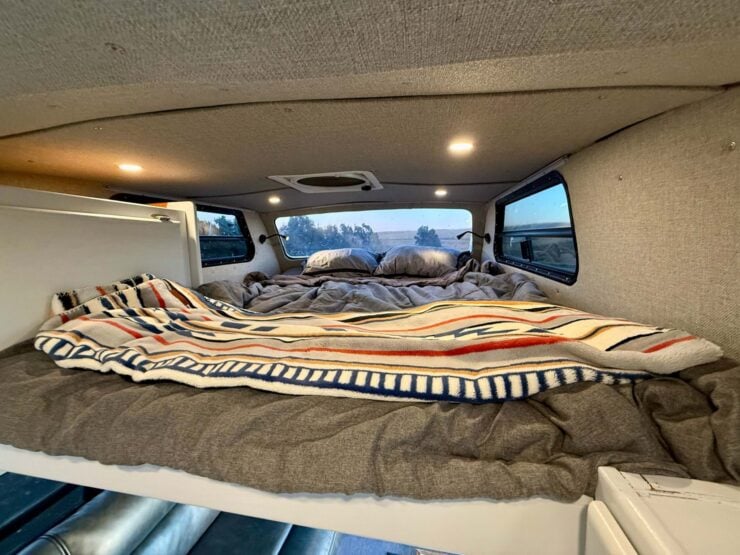
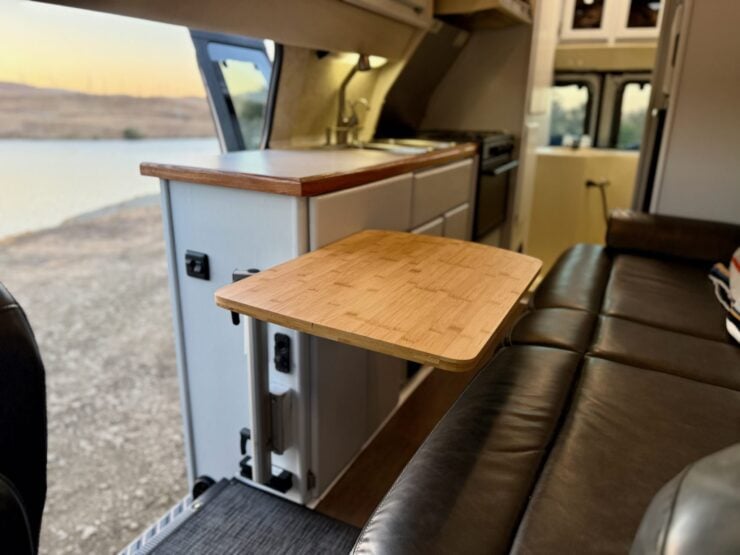
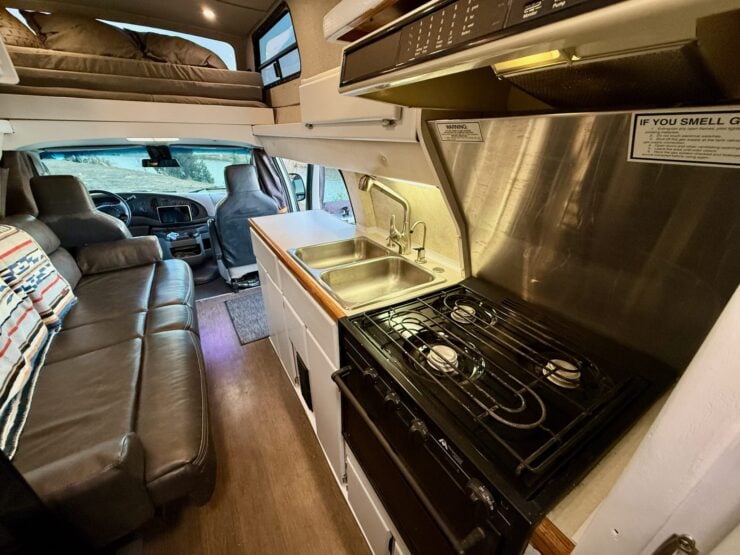
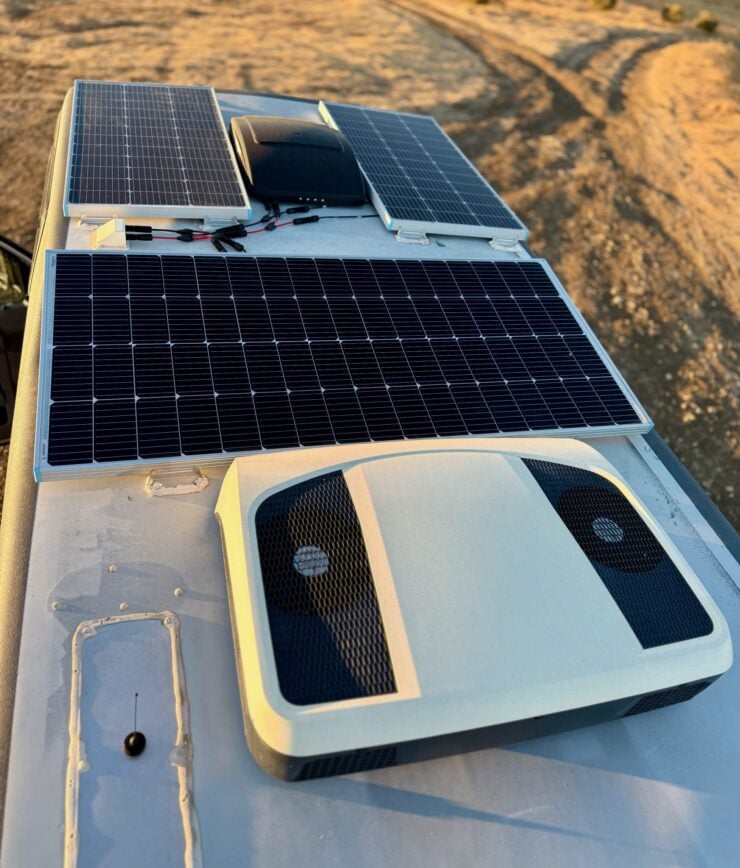
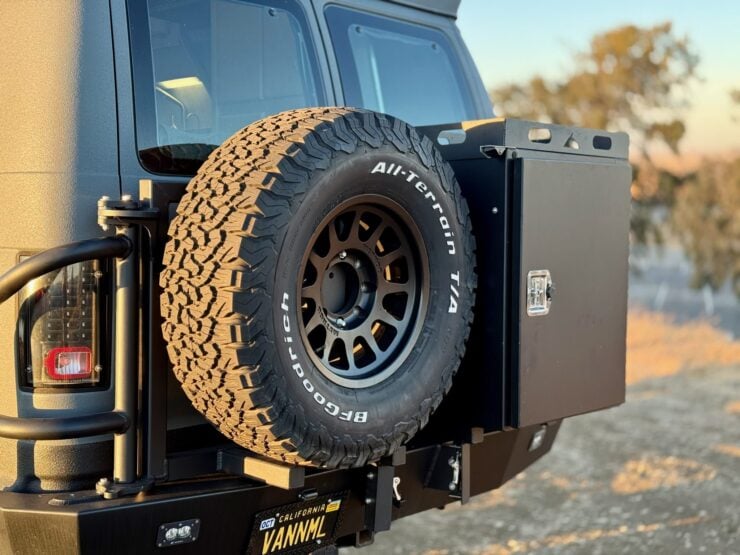
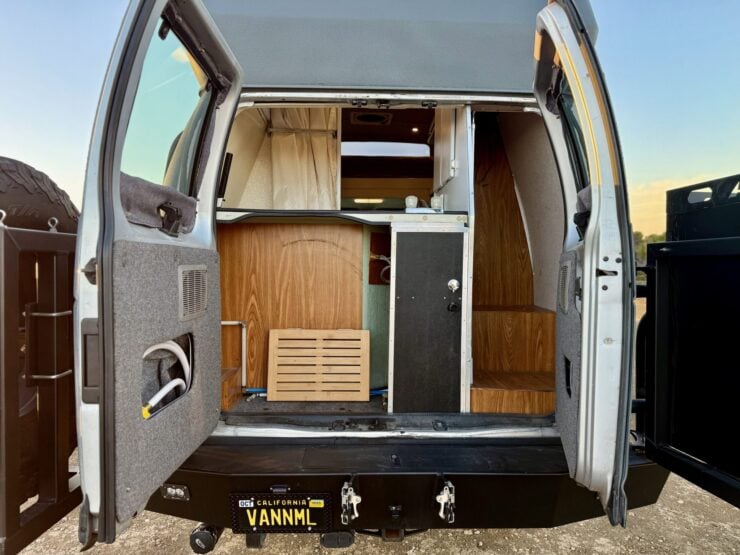
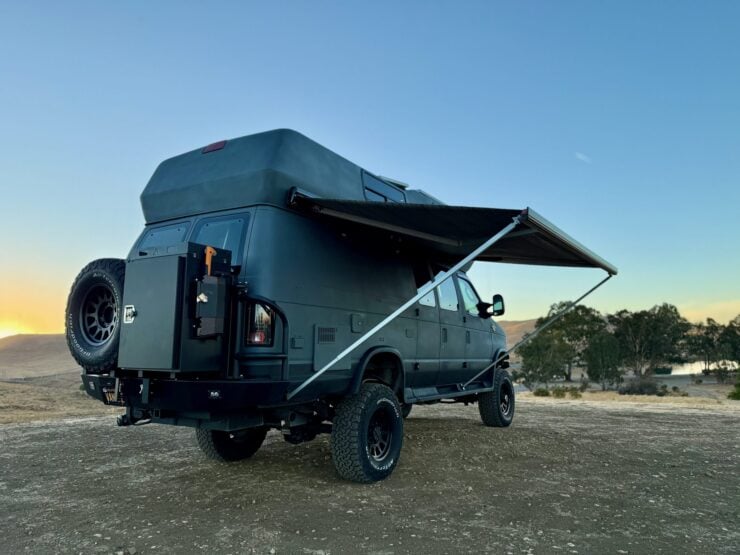
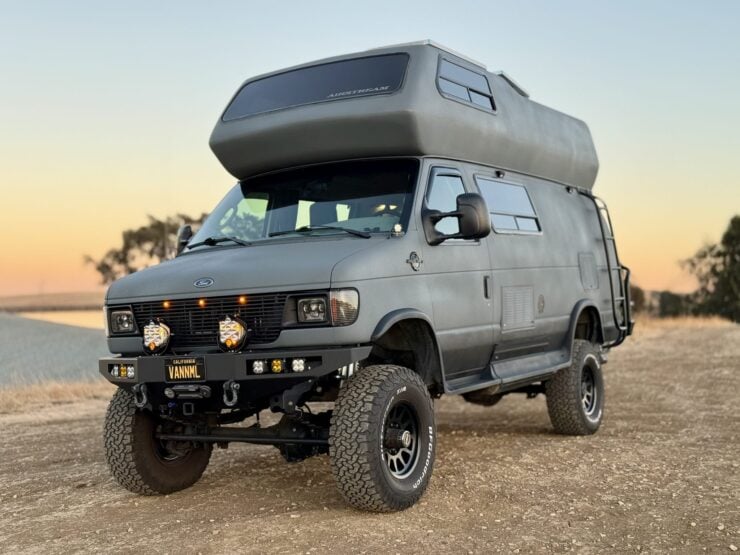
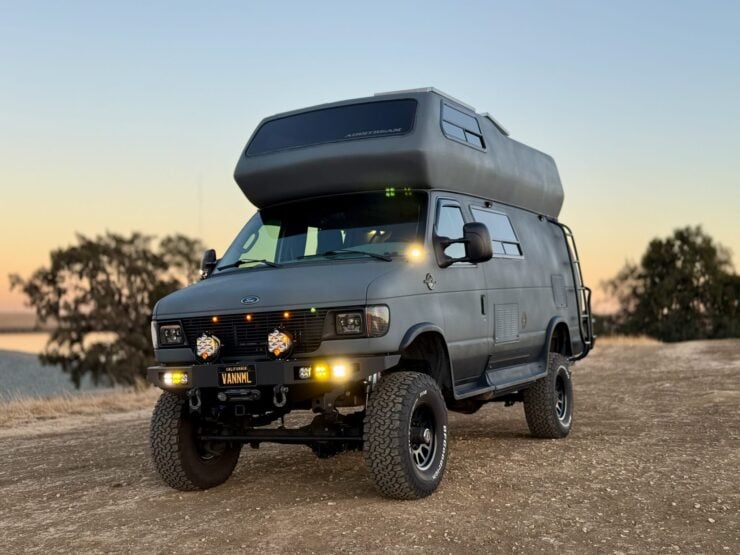
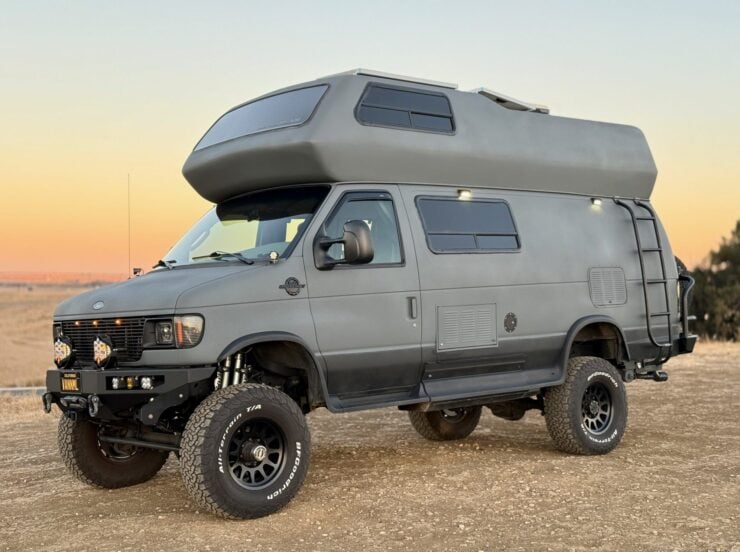
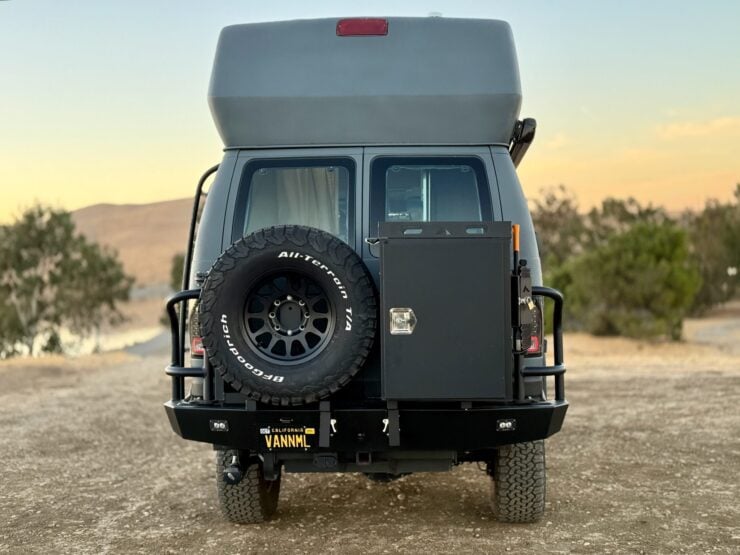

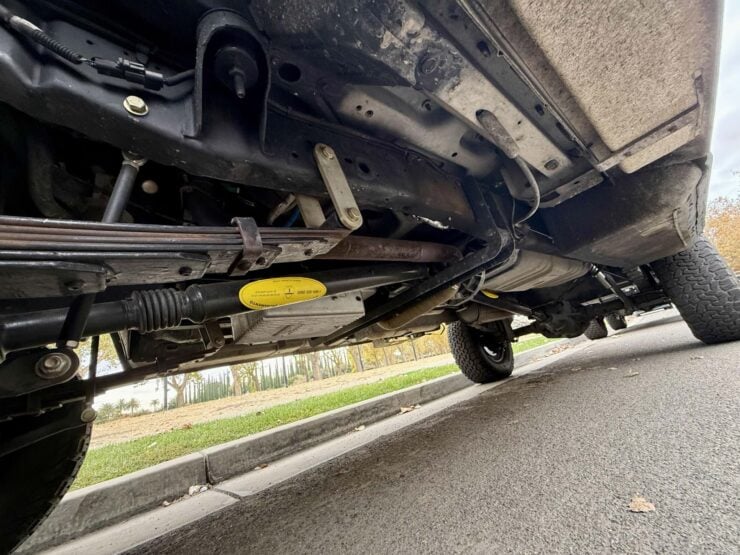
Images courtesy of Bring a Trailer

